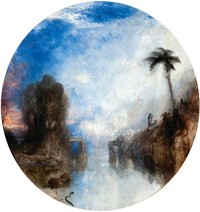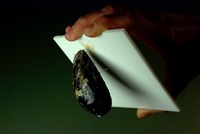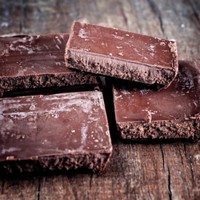Advertisement
Grab your lab coat. Let's get started
Welcome!
Welcome!
Create an account below to get 6 C&EN articles per month, receive newsletters and more - all free.
It seems this is your first time logging in online. Please enter the following information to continue.
As an ACS member you automatically get access to this site. All we need is few more details to create your reading experience.
Not you? Sign in with a different account.
Not you? Sign in with a different account.
ERROR 1
ERROR 1
ERROR 2
ERROR 2
ERROR 2
ERROR 2
ERROR 2
Password and Confirm password must match.
If you have an ACS member number, please enter it here so we can link this account to your membership. (optional)
ERROR 2
ACS values your privacy. By submitting your information, you are gaining access to C&EN and subscribing to our weekly newsletter. We use the information you provide to make your reading experience better, and we will never sell your data to third party members.
Agriculture
Art conservators struggle with microscopic eruptions in masterpieces
Lurking in paint layers, metal soaps are forming and damaging paintings
by Sarah Everts
May 23, 2016
| A version of this story appeared in
Volume 94, Issue 21

When conservator Petria Noble first peered at Rembrandt’s “Anatomy Lesson of Dr. Nicolaes Tulp” under a microscope back in 1996, she was surprised to find pockmarks across the nearly 400-year-old painting’s surface.
Each tiny crater was just a few hundred micrometers in diameter, no wider than the period at the end of this sentence. The painting’s surface was entirely riddled with these curious structures, giving it “a dull, rather hazy, gritty surface,” Noble says.

This concerned Noble, who was tasked with cleaning the masterpiece with her then-colleague Jørgen Wadum at the Mauritshuis museum, the painting’s home in The Hague.
When Noble called physicist Jaap Boon, then at the Foundation for Fundamental Research on Matter in Amsterdam, to help figure out what was going on, the researchers unsuspectingly embarked on an investigation that would transform the art world’s understanding of aging paint.
As it turns out, Noble, now head of paintings conservation at the Rijksmuseum in Amsterdam, wasn’t the first to notice the pockmarks on the Rembrandt painting, although she was the first to push for a scientific explanation. Digging through publication archives, the team unearthed a 1978 report in which museum researchers speculated the craters were formed by tiny, mysterious gas bubbles that had percolated up and out of the painting’s surface, leaving behind round impressions.
Many of these spherical craters also contained lumps of a strange translucent white material, Noble says. Cross sections of the craters and lumps revealed that an army of white spherical globules—some have likened them to insect eggs—were assembling beneath the painting’s surface.

Researchers now know the curious white lumps were neither insect eggs nor gas bubbles. After a few years of putting Rembrandt’s “Anatomy Lesson” under the scientific scalpel, Noble, Boon, and others determined that the strange white muck is lead soap, a substance chemically analogous to the soap Rembrandt might have used to wash his hands after a long day of painting.
But instead of being produced by 16th-century cosmetic manufacturers, the lead soap found in and on this masterpiece is a product of the painting itself, formed over centuries by the marriage of free fatty acids and lead ions from the layers of paint lurking beneath the artwork’s surface.

Metal soap formation is not just a curious trait of Rembrandt’s “Anatomy Lesson” but a degradation phenomenon common to thousands of oil paintings over many eras—starting in the 13th century and increasing in prevalence in modern-day artwork. After Noble, Boon, and colleagues launched an international survey of conservators, they discovered paintings by artists as varied as Francisco de Goya, Marc Chagall, Vincent van Gogh, Piet Mondrian, and Georgia O’Keeffe that feature the curious paint chemistry. “We were all seeing metal soaps,” Noble says.
Metal soaps don’t just produce pockmarks; they can also lead to the formation of disfiguring crusts and reflective films on the surface of paintings. Formation of the soaps can even cause delamination, a process in which layers of paint deform, lift up, and flake off. “These are serious issues when you are talking about paintings whose value is measured in millions per square meter,” Boon says.
Although these seemingly disparate degradation issues have long challenged conservators, it’s been only in the past decade or so that they have discovered that metal soaps are to blame. At a conference in March at the Rijksmuseum, in Amsterdam, museum conservators and scientists from around the world convened to discuss what unexpected chemistry was taking place below the surface of these paintings and what, if anything, could be done to thwart its progression.
The existence of metal soaps in age-old art belies a common misconception that a dried painting is a permanent object and that chemistry ceases to take place beneath the surface once the paint has hardened, Boon says.
Instead, the chemistry of dried paint takes on the rhythm of geology—largely slow and protracted, but not without dramatic events. The eruption of a metal soap globule through a painting’s surface or the flaking off of a paint layer, like many of Earth’s topological upheavals, is many years in the making.
To understand how metal soaps form in artwork, researchers have had to untangle the complex chemistry taking place within a masterpiece after the artist finishes the final stroke. “We are literally watching paint dry,” says Joen Hermans, a physical chemist who studies metal soap formation at the University of Amsterdam.
Oil paint traditionally starts with linseed or some other drying oil, substances that turn into a hard film when exposed to air. These oils contain a complex mixture of fatty acids, mostly attached to a glycerol backbone. To this drying oil, also called a binder, paint producers add pigments and additives that may quicken the drying process or improve the texture of the paint or keep the pigment suspended over time. “Every paint has its own peculiar chemical composition,” Boon says. “Then you put layers of many different paints all on top of each other to produce a painting.” The end result, he says, is that “each painting is its own unique, incredibly complicated chemical system.”
That being said, Boon notes that, for drying, the most important component of linseed oil is the linolenic acid often attached to its glycerol backbone. When exposed to air, linolenic acid’s three double bonds help the paint intercalate and polymerize, transforming “the viscous mass into a pretty tough material that people call dry,” Boon says. “Unfortunately this system is not stable.”
Over time, heat, light, and, in particular, humidity help sever the fatty acids from the glycerol backbone. These lone fatty acids percolate through the paint matrix, along with lone fatty acids present naturally in the oil and those added by artists or manufacturers to improve paint texture or drying properties. The negatively charged fatty acids are drawn to positively charged metal ions—lead, zinc, and others, present as part of pigments or driers in the painting. The primary difference between metal soaps and other soaps is the chemical nature of the positively charged ions: In hand soap, they are often sodium or potassium.
The resulting metal soaps organize into liquid crystals, forming aggregates that continue to grow over time, noted the Rijksmuseum’s Katrien Keune and Boon in a 2007 report for the American Institute for Conservation of Historic & Artistic Works. These soapy aggregates increase in girth, eventually cracking the painting’s top layer and pushing through.
These bulbous eruptions—often termed protrusions—are by far the most commonly observed manifestation of metal soaps. By the time a protrusion is observed, there’s not much that can be done to stop the damage. Yet, the balls are rarely more than 200 µm in diameter. Some people in the museum and art world “are really alarmed by these pockmarks, while others ask, ‘If you need a microscope to see it, is it really a problem?’ ” says Gillian Osmond, a paintings conservator at Queensland Art Gallery & Gallery of Modern Art, in Brisbane, Australia.
The intensity of concern depends a lot on the extent of metal soap damage and its location on a painting, she adds. For example, sometimes free fatty acids migrate to the surface of a painting, producing a whitish haze known as efflorescence. Although disturbing and often recurrent, efflorescence can often be removed by conservators with standard cleaning techniques. More problematic is when free fatty acids meet metal ions at a painting’s surface. When this happens, metal soaps tend to crystallize into hard, dark crusts that can’t be removed with cleaning solvents. In recent years, conservators have had success using metal chelators to dislodge the metal ions from the crust, says Aviva Burnstock, at the Courtauld Institute of Art, in London. With the metals gone, gentle cleaning can sometimes remove the dark crusts, she adds.

One of the most problematic places for metal soaps to form is at the base layer of a painting. Here, the soap’s expansion and slipperiness can weaken adhesion between paint layers, causing the paint to lift up and flake off. This delamination phenomenon is associated with zinc soap formation and is seen most often in modern and contemporary paintings from the 19th and 20th centuries. In the mid-19th century, zinc white was introduced as a safer alternative to lead white for paint, Osmond says. The problem is that zinc appears to have a much higher and faster propensity for metal soap formation than does lead. So zinc’s presence at the foundation of a painting—for example, in the base white layer artists apply to their canvases—can make that artwork particularly vulnerable to soap formation.
The introduction of zinc is not the only modern addition to paint recipes that has set the stage for the more rapid and dramatic production of metal soaps. For example, Klaas Jan van den Berg, a scientist at the Cultural Heritage Agency of the Netherlands, points to the increasing use of paint extenders, such as aluminum stearate.
At the turn of the 20th century, paint makers began adding aluminum stearate, a metal soap itself, because it improved dispersion of pigments in oil and prevented the two from separating in the tube. Adding aluminum stearate also helps the paint manufacturer’s bottom line, van den Berg says, by allowing them to “use less pigment, making the paint cheaper to produce.” Artists also like it as an additive because it gives the paint a buttery, fluffy texture, making it pleasing to apply to a canvas. The problem with adding aluminum stearate is that the stearate quickly releases from the aluminum, creating a pool of free fatty acids that can form soaps with other more problematic ions in the painting.
Scientists are now studying how other chemical constituents of paint affect metal soap formation. For example, some want to determine whether modifying the metal pigment’s particle shape and size can reduce its propensity to form soaps. Meanwhile, others are studying the dynamics of metal soap formation, trying to understand the rate of diffusion of metal soap constituents through a painting, how precisely the metal ions coordinate fatty acids in soaps, and why some metal soaps form faster than others.
Perhaps more important, this community is struggling to find ways to restore and conserve paintings affected by metal soap formation. Because humidity accelerates metal soap formation, conservators worry that gentle cleaning with water—the bread and butter of masterpiece cleaning strategies—might actually activate metal soap formation or make the problem worse.
But it’s still unclear, Osmond says, whether a short exposure to water, such as during a surface cleaning, is a problem or whether long-term humidity changes are the bigger concern. At a panel discussion about conservation strategies at the Rijksmuseum’s conference, attendees expressed feelings of paralysis and a growing frustration that metal soap problems reappear soon after conservation treatment. Most of all, participants voiced concern about a lack of practical solutions for dealing with the manifold manifestations of metal soaps.
Meanwhile, conservators are often faced with the expectations of the public—and museum administrators—that a painting should look pristine. Should conservators clean a painting even if it has an overall detrimental effect to the cultural gem? And what if the best science can offer only slows down metal soap formation but does not eradicate it?
Maybe one day we’ll look at the pockmarks, crusts, reflective hazes, and protruding soapy balls and enjoy the painting’s aging, its patina, the way we enjoy the green oxidation on aged copper.
Another problem for conservators: The curious case of dripping oil paint
Artist Frank van Hemert never expected that drips of paint would suddenly start trickling down his canvases, years after his paintings had dried, been sold, and hung in museums and private collections around the world.
Around 2000, about seven years after completing some paintings, “I started getting phone calls from buyers saying, ‘Frank, the dripping paint destroyed my carpet and furniture,’ ” van Hemert says. Some collectors asked for refunds or stopped buying his work from the early ’90s, which was very distressing, van Hemert says.
The strange dripping has also affected a variety of other 20th-century painters, including Pierre Soulages and Jean-Paul Riopelle.
The tears and drips found on paintings by different artists from different eras have much in common, chemically speaking, pointing to poor oil quality as a common feature, says independent conservation scientist Jaap Boon of Jaap Enterprise. Although research by Boon and his team is still in progress, they are getting closer to understanding why the architecture of some oil paint collapses in this way. In particular, they have found that the drips contain broken-down components of the plant oil used to make the paint. These components have formed micelles, accumulated, softened the paint, and then begun flowing down the side of a canvas.
The phenomenon may be caused in part by changes to the kind of oil used as a binder. For example, in the 20th century, oil paint manufacturers began adding other plant oils, such as sunflower oil, to traditional linseed oil. Sunflower oil has less of a propensity to yellow with time—a characteristic you might want in white or other light-colored paints.
The problem is that sunflower oil has fewer double bonds in the fatty acids attached to its glycerol backbone. Without ample double bonds, the “dried” paint is less thickly meshed than in a painting created by an all-linseed-based paint. Furthermore, the triglycerides in the paint oils break down into component parts that are not anchored to each other—and that begin a new life forming micelles that flow out from a painting’s surface.
CORRECTION:
The sidebar in this story about Frank van Hemert’s dripping oil paint was updated on May 26, 2016, to correct the artwork shown. C&EN mistakenly published the wrong painting initially.





Join the conversation
Contact the reporter
Submit a Letter to the Editor for publication
Engage with us on Twitter